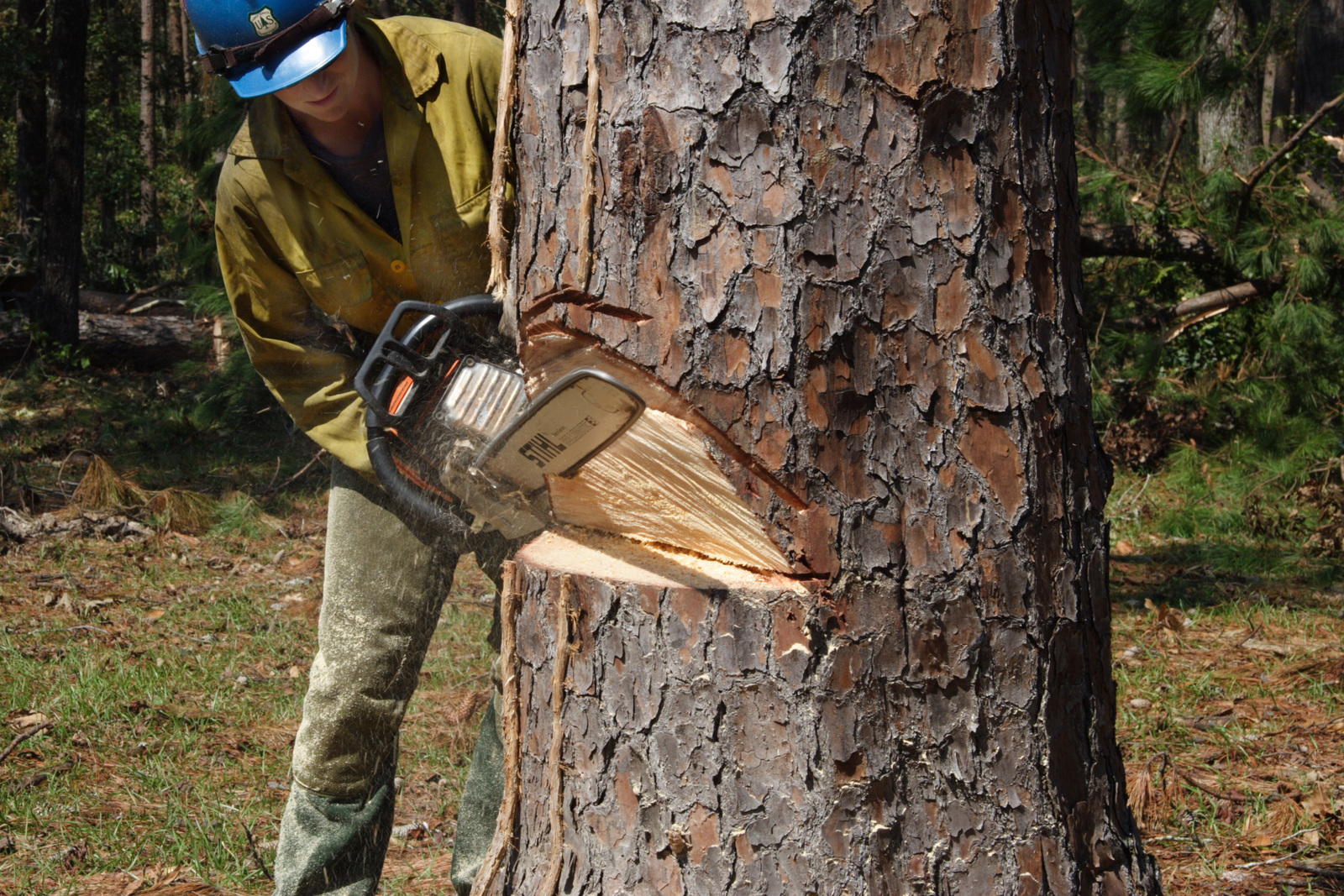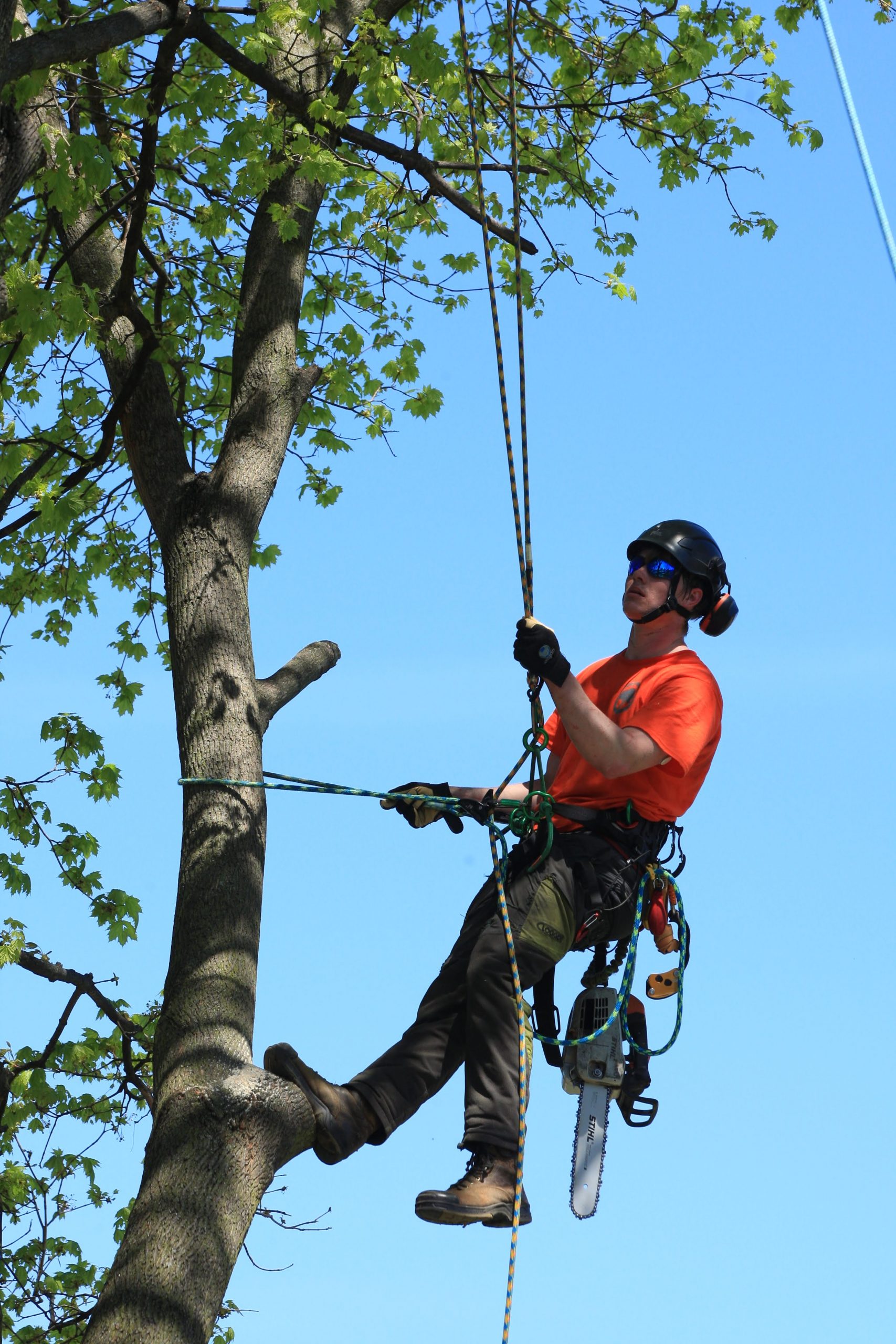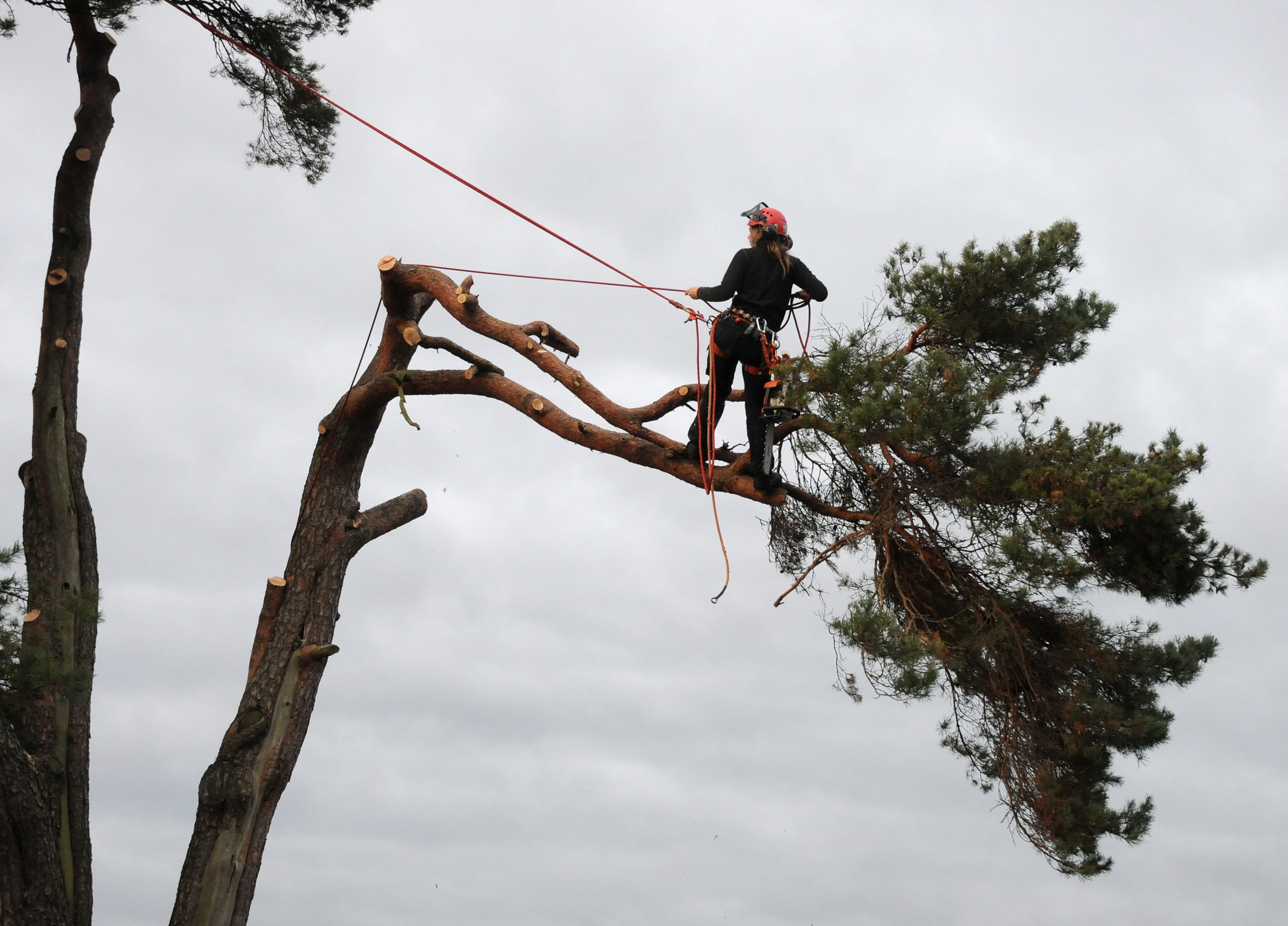Contents
– Tree removal: several good reasons
– Techniques and methods for tree removal
– Precautions and safety tips for tree removal
Tree removal is the first step in the cutting process. It is usually followed by:
– tree felling;
– delimbing on the ground;
– cutting up the wood;
– uprooting or stump removal.
Tree removal: several good reasons
Vidor, TX, October 11, 2005- Hotshots, specialized firefighters who clear forestry disaster sites, clear fallen timber from a county park. Hundreds of emergency workers are funded by FEMA. Photo by Ed Edahl/FEMA
Tree removal consists of removing all or part of the crown of the upright tree before:
– felling it;
– or to cut down the entire vertical tree when felling is impossible.
There are several reasons for tree removal:
– partial removal of the crown to shift the centre of gravity to direct the fall of the tree during felling;
– presence of infrastructure, in particular, telephone and electricity lines caught in the crown and threatened by the fall of the tree during felling
– presence of infrastructure creating a lack of clear space on the ground to accommodate the fall of the tree during felling.
Techniques and methods of tree removal
Tree removal can take several forms depending on the tree’s environment.
Tree removal before felling: partial cutting
Before felling, the partial dismantling of the crown may be necessary:
– to allow the tree to fall in the desired direction during the fall;
– to reduce the volume of the felled tree when it is impossible to have a sufficiently clear ground surface to accommodate the bole and crown during the fall.
Direct felling

Vidor, TX, October 11, 2005- Hotshots, specialized firefighters who clear forestry disaster sites, clear fallen timber from a county park. Hundreds of emergency workers are funded by FEMA. Photo by Ed Edahl/FEMA
Direct felling techniques do exist to direct the fall, but they become cumbersome to implement (bracing, winching) or ineffective when its crown unbalances the tree.
Complete tree removal
A complete dismantling is carried out when any felling is impossible because of an insufficient ground surface to accommodate the bole, even if it is free of its crown.
Complete tree removal consists of cutting down the entire tree in sections: from the top to the stump. The sections or “logs”, as well as the branches, must usually be lowered using ropes to avoid damage to above-ground infrastructures (houses) or buried infrastructures (septic tanks, etc.).
Precautions and safety tips for tree removal
There is no secret: to dismantle a tree, you have to climb it! Climbing in trees and especially working at height present significant risks:
– the climber falling;
– falling branches and logs for people and property on the ground;
– risks of cuts to the personnel carrying out the cutting, especially at height.
Dismantling requires a series of safety measures and specific pruning equipment. Removal of trees and tree maintenance is a job for qualified and skilled professionals/arborists who will be in line with the respective regulations for such activity.
Appropriate equipment for safe dismantling
Safety precautions are essential to protect:
– Climbers: regulations and safety for work at height or use of a bucket, pruning harness, etc.;
– pruners: regulations and safety of cutting tools (cut-proof equipment, pruning helmet)
– Goods and people on the ground: retention, zip line or crane.
It is advisable to find out about the pruning company before proceeding with the cut.
3 safety techniques for tree removal

Here are 3 techniques used to make tree removal as safe as possible:
|
Tree Dismantling Techniques |
Definition |
|---|---|
|
Removal by retention |
A rope struck at the top on a pulley is unwound from the ground to slow the fall of branches and logs. |
|
Dismantling by zip line |
A rope system is created to move the fall point from the vertical of the cut point. |
|
Dismantling by crane |
A crane is used to extract the dismantled branches and logs from above. |
We will be coming up with more posts on tree removal in our forthcoming publications. Meanwhile, remember to share this post and leave your comments below.



1 thought on “Tree Removal: Techniques and Methods”